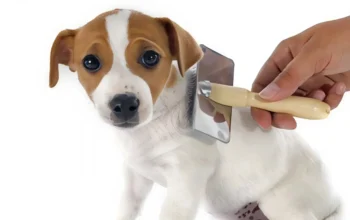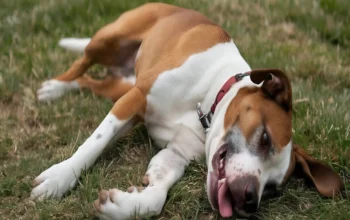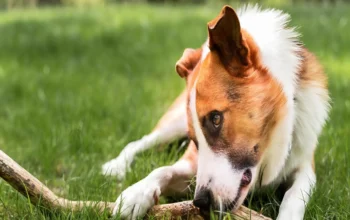Ever been confused about why your dog suddenly seems off? Like one day they’re bouncing around like usual, and the next, they’re quiet, refusing food, and not themselves? It’s easy to shrug it off as a minor stomach bug, but sometimes, it’s something much more serious.
If your dog is acting strange and you notice some worrying signs, it could be canine parvovirus. This isn’t just a bad day for your pup. Canine parvovirus symptoms often appear fast, and if you don’t catch them early, things can go downhill quickly.
Let’s walk through what you need to look for, why it matters, and what to do before it’s too late. Don’t worry, this isn’t a lecture – just a real talk about keeping your dog safe from a pretty nasty viral infection.
Table of Contents:
What Is Canine Parvovirus
Canine parvovirus, also called CPV or just parvo, is a highly contagiouus viral infection that mainly affects the gastrointestinal tract in dogs. It spreads super easily through direct contact with infected poop or anything that’s been contaminated, like a food bowl, shoes, or even grass.
Young puppies and unvaccinated dogs are especially at risk, but even vaccinated dogs aren’t completely immune. Parvo hits hard and fast, and the symptoms can be brutal if not treated quickly.
Why Timing Is Everything
Parvo symptoms usually show up around three to seven days after a dog is exposed to the virus. But here’s the tricky part: dogs can already be contagious before showing any signs. So, your dog might look totally fine while spreading the virus to others.
That’s why being aware of canine parvovirus symptoms is so important. Early detection can literally mean the difference between life and death, especially for younger pups.
Common Symptoms of Canine Parvovirus
If you’re noticing any of the signs below, especially more than one at a time, it’s timee to take things seriously. Don’t wait to see if things get better on their own.
1. Sudden Fatigue or Weakness
Dogs are naturally active and curious. If yours is suddenly sluggish, not moving much, or just not interested in playing, that could be the first sign something’s wrong. This kind of lethargy is one of the earliest and most common parvo signs in dogs.
2. Loss of Appetite and Noticeable Weight Drop
A dog turning down food is already a warning sign. Combine that with quick weight loss or a refusal to drink water, and you might be looking at a serious internal issue. Parvo affects the digestive system, so appetite loss is no surprise.
3. Vomiting That Doesn’t Stop
Dogs might throw up now and then, but parvo-related vomiting tends to be frequent and can lead to severe dehydration. If your dog is vomiting repeatedly and can’t keep food or water down, call the vet immediately.
4. Diarrhea That Smells Awful or Has Blood
Diarrhea is a hallmark symptom of parvo. What sets it apart is the smell — it’s extremely foul. The stool might be yellowish, watery, or bloody. If you see this along with other symptoms, don’t delay getting help.
5. Fever or Drop in Body Temperature
Some dogs run a fever with parvo, while others experience hypothermia. Both are signs that your dog’s immune system is overwhelmed and losing the fight. Either way, it’s an emergency.
6. Stomach Pain and Bloating
If your pup seems uncomfortable when you touch their belly, or if the abdomen looks swollen or tight, it might be due to inflammation in the intestines. Parvo causes intense digestive irritation, which can lead to bloating and pain.
7. Pale or Greyish Gums
Take a peek at your dog’s gums. Healthy gums should be pink. If they look pale, white, or grayish, it’s often a sign of poor circulation and possible internal bleeding. This symptom usually shows up in more advanced cases.
The Symptoms Don’t Always Look the Same
Here’s the tough part: not all dogs show every symptom. Some might only seem a little off, while others decline quickly. Puppies tend to suffer the worst, but even older dogs can get hit hard.
Also, dogs can carry the virus and not show any symptoms at all. That’s why it’s so easy for it to spread before you even know there’s a problem.
Signs That Your Dog Might Be Getting Better
Once treatment begins, you’ll want to know if your dog is improving. Here are a couple of good signs to watch for.
1. Stool Looks More Normal
If the poop starts to firm up and there’s no more blood or watery texture, it’s a great sign that the intestines are healing. Normal color and consistency are major improvements.
2. Eating and Drinking Again
Dogs in recovery start showing interest in food and water. Even small steps like sniffing food or licking a bowl are positive. A return in appetite is one of the first wins during treatment.
When Should You Call the Vet
Honestly, if you’re asking that question, you probably already should. It’s better to be overly cautious than wait too long.
1. Don’t Wait for All the Symptoms
You don’t need to see every single symptom to act. Vomiting and diarrhea together are already serious, and if you notice weakness or no appetite on top of that, your dog needs medical attention right away.
2. Quick Diagnosis Saves Lives
Vets can test for parvo using a simple stool sample. If it comes back positive, your dog will likely need IV fluids, medications, and possibly a hospital stay. Early treatment can greatly increase survival chances.
How to Protect Your Dog From Parvo
Now that you know what to watch for, here’s how to reduce the risk of ever facing this problem.
1. Stay Up to Date With Vaccinations
The best protection against parvo is vaccination. Puppies need a full series of shots starting at six weeks old, with boosters as they grow. Adult dogs also need regular updates.
2. Keep It Clean
If your dog has had parvo or you’ve been around an infected dog, you need to disinfect everything. Parvo can live in the environment for months. Use strong cleaners designed to kill the virus.
3. Limit Contact Until Fully Vaccinated
Avoid taking young puppies to dog parks, pet stores, or anywhere lots of dogs gather until they’ve had all their vaccinations. It’s not worth the risk.
Wrapping It Up
So, now you know that canine parvovirus symptoms are nothing to mess with. This isn’t just a tummy issue – it’s a serious viral disease that spreads fast and can be deadly if ignored.
The good news? You’re now equipped to spot the signs early, act fast, and hopefully avoid a crisis. Pay attention to your dog’s behavior, trust your instincts, and don’t hesitate to call your vet if something feels off.
Your dog counts on you to be their voice. Let’s stay alert and keep them safe.






